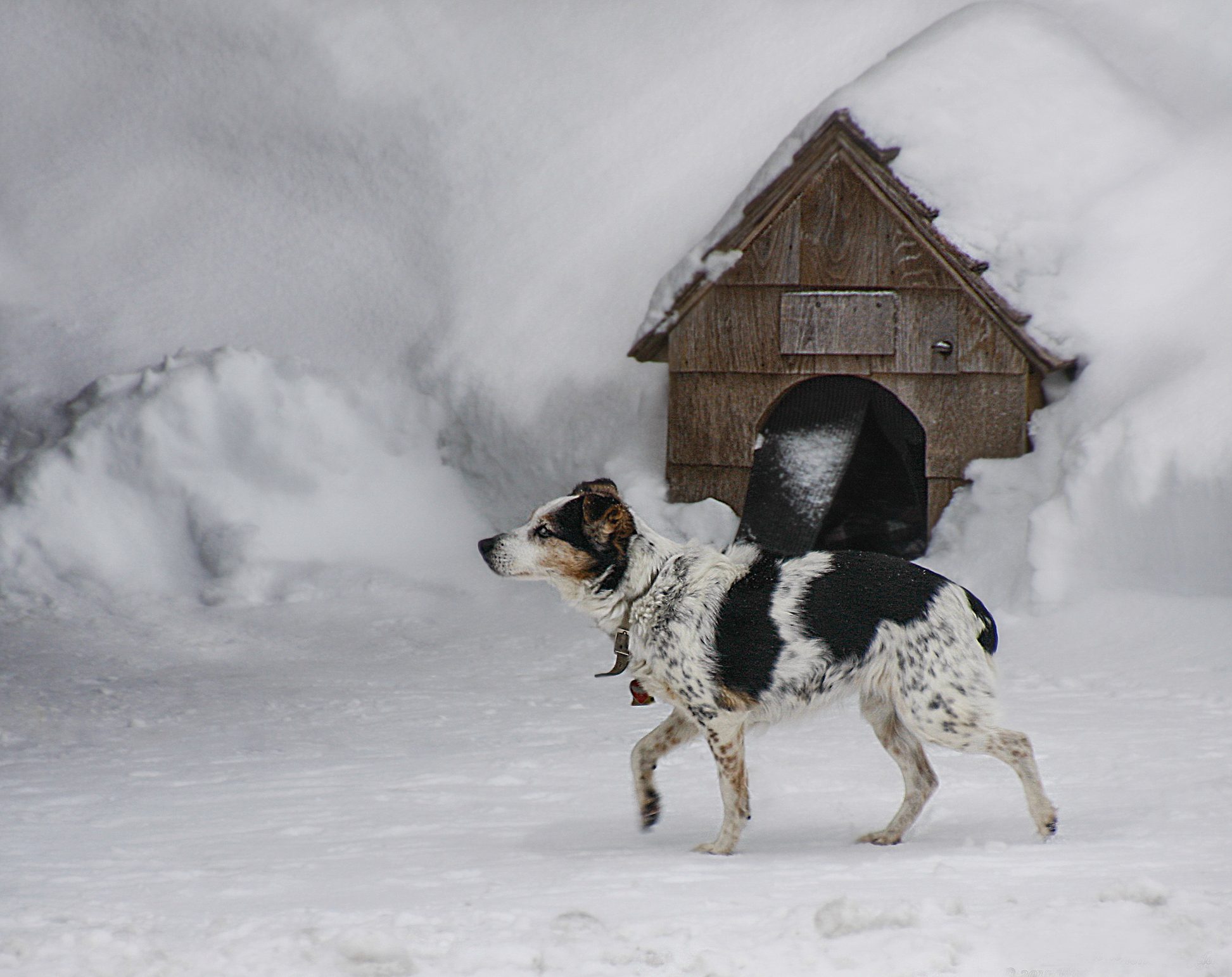Learn what to put in an outside dog house for warmth as well as several other ways to keep your pups warm in the winter.

What to Put in an Outside Dog House for Warmth, and Other FAQs


Dress for the Elements

Keep Paws Clean

Don’t Leave Dogs Outside Alone for Long Periods

Create Warming Stations Inside

Keep Dogs on Leash

Insulate the Dog House

Keep Dogs Fed and Hydrated

Bathe Your Dog Inside

Bring All Dogs Inside When It’s Extremely Cold
FAQ
How cold is too cold for different breeds and sizes of dogs?
Resident veterinary expert at Waggel, Aimee Warner explains how breed and size affect cold tolerance in dogs. “Small breeds such as chihuahuas and toy breeds will begin to show the effects of hypothermia at 45 degrees Fahrenheit, while heavy coats on large breeds can tolerate it up to 20 degrees or lower.” However, size is not always the only factor when it comes to dog safety in the cold. Warner continues, “A slender greyhound will freeze in cold weather despite its size, yet a tiny Pomeranian might tolerate cold conditions better than you’d imagine.”
Warner offers the following general guideline: “I typically suggest bringing in dogs when it falls below 32 degrees for an extended period, breed notwithstanding. For elderly or medically vulnerable dogs such as those with arthritis or heart disease, that temperature should be significantly higher — perhaps 50 degrees.”
What are behavioral signs your dog is too cold, even if they’re not shivering?
Warner shares, “I instruct owners to observe for slight signs of behavioral changes caused by cold stress before shivering even starts. Lethargy is usually the initial presentation,” she says, cautioning to watch for a “normally active dog who will not move or play.”
Warner details further signs that your dog may be too cold: “I also observe dogs lifting their paws a lot, seeking warm surfaces, or pushing against warm sources such as house walls or sunlit areas.” Furthermore, she continues, “Whining or changed vocalization may signal pain, and others become clingy or fussy when cold.”
Warner goes on to explain the most concerning behavioral signs that your dog is too cold. “Most ominously, perhaps, is when the dogs tuck themselves into a ball or attempt to conceal themselves in inappropriate places — like burrowing beneath porches or into unsafe areas. These are often precursors to the more overt bodily signs and mark the window during which intervention is optimal.”
What are some general safety considerations for dogs outside?
Warner shares, “The largest safety issue I deal with as a veterinarian is that owners don’t understand how fast outdoor temperature can be hazardous to their pets.” But temperature isn’t the only consideration. “Beyond temperature, we have wind chill, surface temperature, and length of time they are exposed,” she adds. “I always advise pet owners, if you cannot stand outside without a hat and gloves for yourself, likely your dog cannot either.”
Warner offers some tips for providing adequate shelter for outdoor dogs. “Several of the most important safety precautions involve offering enough shelter that is dry, windless, and the right size — not too large that it can’t hold body heat, but large enough to allow the dog to stand and move around comfortably.” She emphasizes, “Access to unfrozen water is absolutely required because dehydration can happen even in extremely cold conditions.”
What are some common mistake dog owners make when it comes to keeping dogs outside?
“The most common error I witness is owners believing a dog’s coat will be suitable protection without taking into account the individual animal’s needs,” says Warner. “I’ve dealt with numerous instances where owners left double-coated breeds such as Jack Russell Terriers outside believing they’re suitably insulated but failed to take into account the issues of age, health, or acclimatization.” She continues, “Another fatal error is applying human reasoning. Just because a dog is not trying to find cover doesn’t mean they’re happy,” she explains, adding, “Dogs are such stoic animals because they will mostly not express distress until the animal is in genuine distress.” Finally, Warner shares, “There are also owners who provide shelter but fail to check if it’s keeping out wind and moisture, which are more dangerous than the cold.”
About the expert
Aimee Warner is the resident veterinary authority at Waggel, a UK-based pet insurance company, where she delivers expert guidance on a comprehensive range of pet health issues. As a trusted voice in veterinary care, she combines clinical expertise with practical advice that pet owners can implement immediately. She specializes in translating complex veterinary concepts into accessible advice. Her practical recommendations on seasonal pet care, preventative health measures, and behavioral management have helped countless pet owners enhance their animals’ quality of life.


















